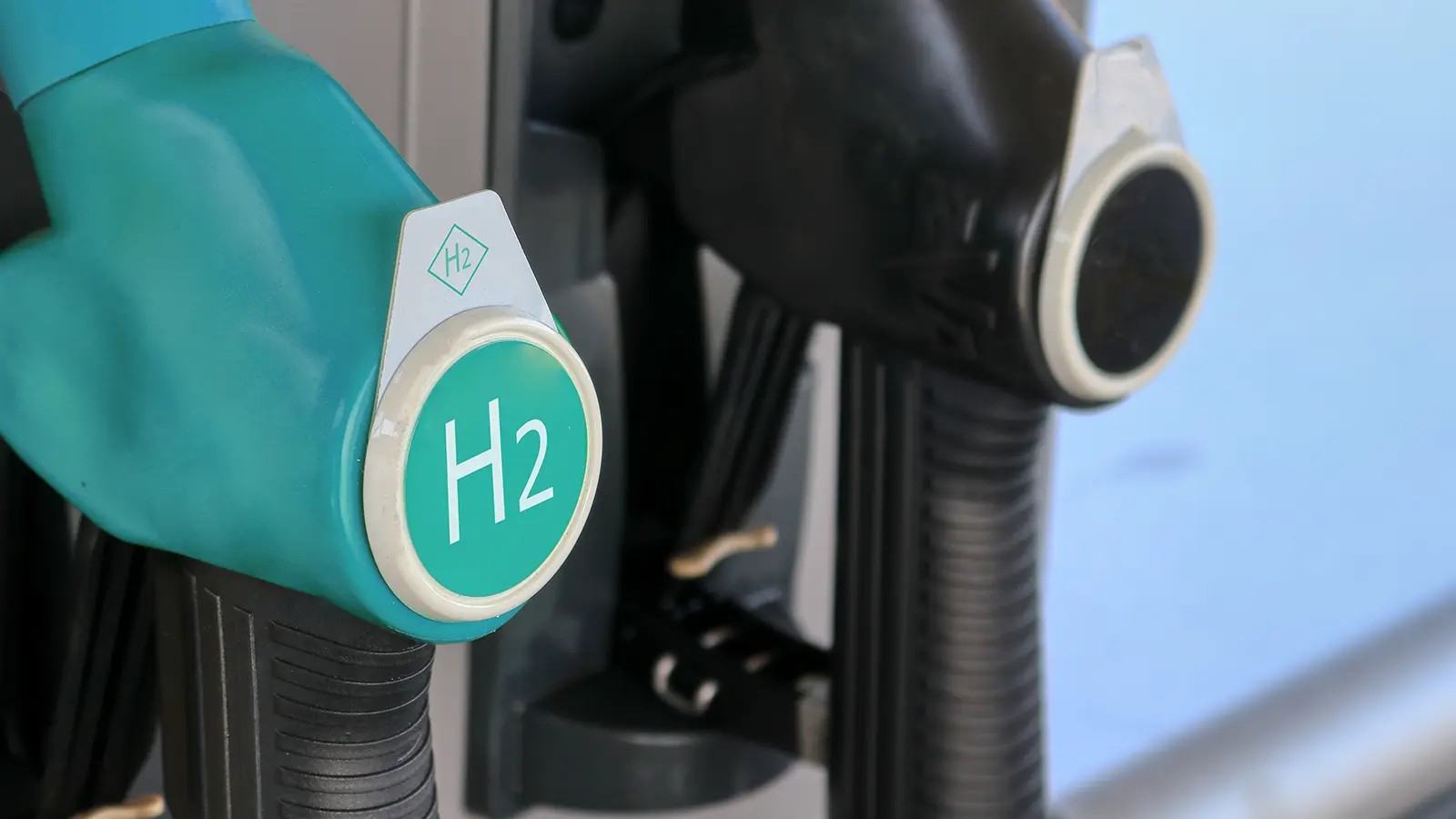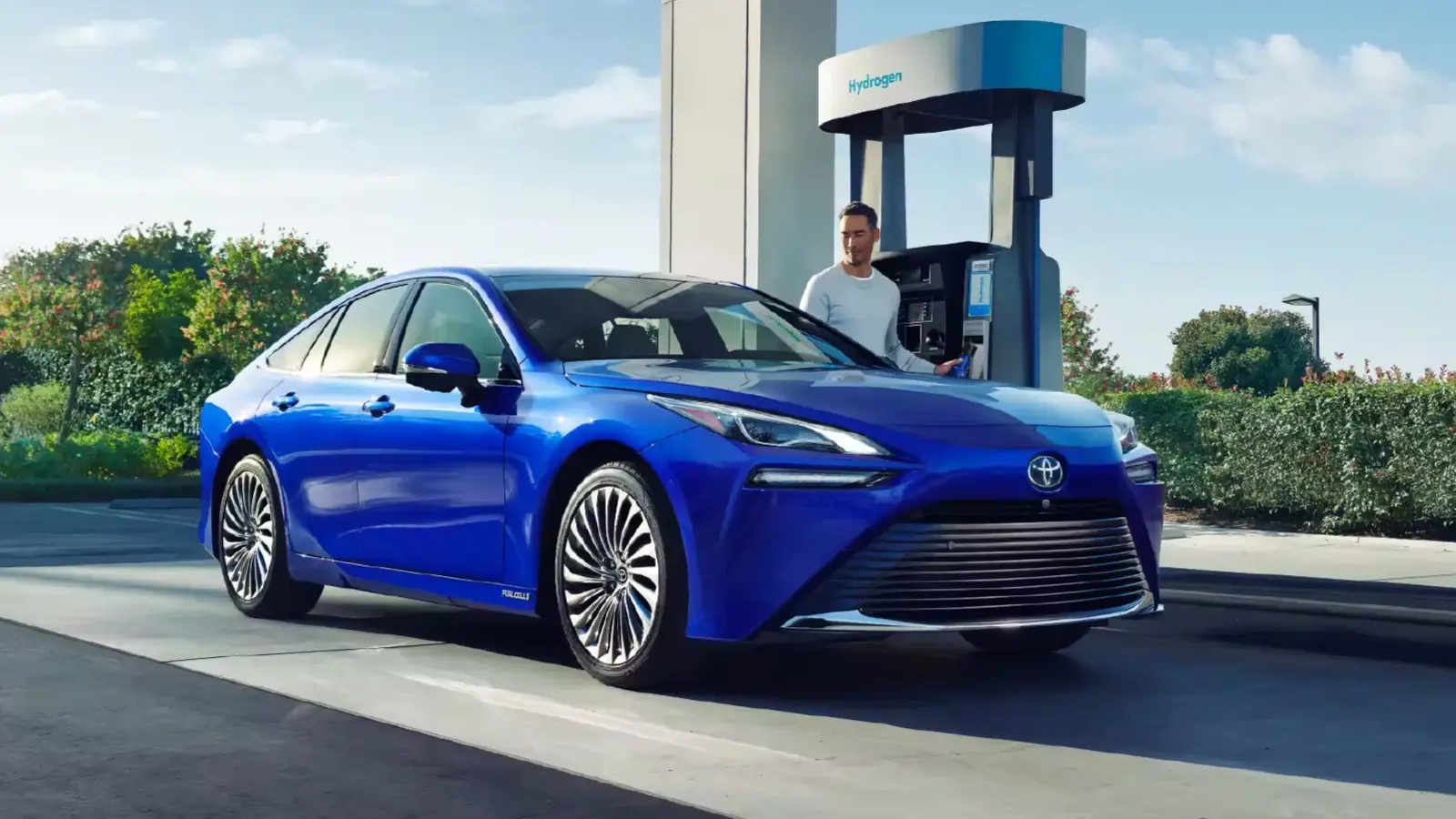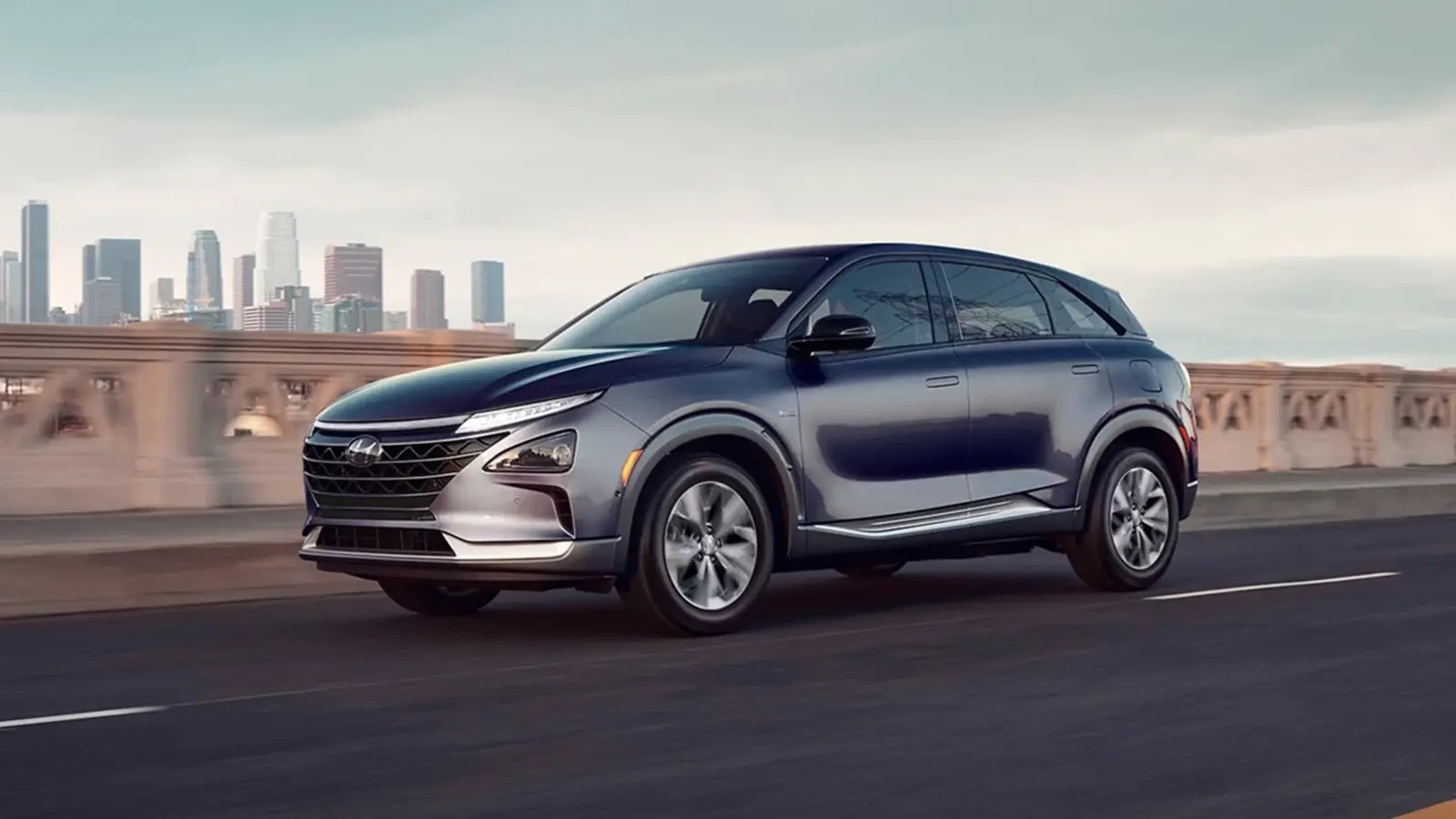The term “hydrogen car” might sound straightforward, referring to any vehicle powered by hydrogen. However, the reality is more nuanced. Hydrogen’s versatility allows for multiple methods of converting it into motion, leading to two primary categories of hydrogen cars: hydrogen fuel cell vehicles and hydrogen combustion vehicles. While both are zero-emission options, their operational mechanisms are distinctly different, offering varied advantages and characteristics.
 A modern hydrogen refueling station with a car being refueled, emphasizing eco-friendly technology
A modern hydrogen refueling station with a car being refueled, emphasizing eco-friendly technology
Hydrogen Fuel Cell Vehicles: Electric Drivetrains Powered by Hydrogen
Hydrogen fuel cell technology, while seemingly modern with the introduction of mass-production models like the Hyundai Nexo and Toyota Mirai in recent years, boasts a history predating the automobile itself. The fundamental principle of fuel cells was discovered in 1838 when a Welsh physicist generated electricity by combining hydrogen and oxygen using an electrolyte. Although early current generation was limited, by the 1960s, fuel cell technology proved its viability in demanding applications, powering America’s Gemini and Apollo spacecraft, providing crews with both electricity and potable water generated from stored hydrogen and oxygen.
The appeal of hydrogen lies in its abundance. As the most plentiful element on Earth by quantity, hydrogen can be derived from various domestic sources, including sustainable methods. The U.S. Hydrogen Council champions the widespread adoption of decarbonized hydrogen for transportation by 2030, highlighting its potential as a clean energy carrier.
A hydrogen fuel-cell vehicle (FCEV) is essentially an electric vehicle, but it eliminates the need for external charging. Instead of a large battery pack requiring hours to recharge, FCEVs are refueled with compressed hydrogen gas in approximately five minutes, mirroring the convenience of gasoline refueling.
This hydrogen gas flows from a pressurized tank to the fuel cell system, where it interacts with oxygen from the air. A electrochemical reaction within the fuel cell stack produces electricity and water. Water, the sole emission, is expelled through a vent pipe. The generated electricity, supplemented by energy captured through regenerative braking, is stored in a small lithium-ion battery. When the driver accelerates, electric power from the fuel cell and/or battery is instantly delivered to an electric motor, propelling the vehicle. The Toyota Mirai, for example, houses both the electric motor and fuel cell stack at the rear, demonstrating the compact nature of these components and offering design flexibility for engineers.
The key advantage of a fuel cell powertrain compared to battery-electric vehicles (BEVs) is the significantly smaller battery size. This reduction in battery mass contributes to a lighter and more efficient vehicle overall. Hydrogen fuel cell cars, not burdened by massive batteries to achieve acceptable driving ranges, often exhibit enhanced driving dynamics, feeling more agile and responsive than their battery-powered counterparts.
 A man refueling a white 2023 Toyota Mirai hydrogen fuel cell car at a public hydrogen station, emphasizing clean energy and refueling convenience
A man refueling a white 2023 Toyota Mirai hydrogen fuel cell car at a public hydrogen station, emphasizing clean energy and refueling convenience
Hydrogen Combustion Vehicles: Utilizing Internal Combustion Engines
While fuel cells represent one pathway for hydrogen utilization, hydrogen combustion presents an alternative approach. Toyota, a long-standing advocate for hydrogen technology, has invested in both fuel cell and hydrogen combustion technologies.
Unlike hydrogen fuel cell vehicles that generate electricity to power an electric motor, hydrogen combustion engines operate on principles familiar to gasoline engines. They look, sound, and perform similarly to conventional internal combustion engines, but instead of gasoline, they burn hydrogen, resulting in zero harmful tailpipe emissions. Like FCEVs, the primary emission from hydrogen combustion cars is water vapor.
Hydrogen combustion offers several potential benefits. It allows for a potentially faster route to market as automakers can leverage existing engine manufacturing infrastructure and expertise. Furthermore, the deployment of refueling infrastructure might be simplified, as existing gas stations could be adapted to accommodate hydrogen, which can be stored on vehicles in either gaseous or liquid form.
From a driver’s perspective, hydrogen combustion cars will provide a driving experience akin to gasoline vehicles, complete with an engine, gears, and engine sound. Hydrogen’s rapid combustion特性 translates to highly responsive and engaging powertrains.
However, hydrogen combustion systems are inherently more mechanically complex than hydrogen fuel cell systems, which rely on a relatively simple electric motor and fuel cell stack. The presence of numerous moving parts in a combustion engine implies potentially higher maintenance requirements over the vehicle’s lifespan, similar to gasoline cars.
Drivers of hydrogen combustion cars also face some of the same challenges as FCEV owners, including the higher cost associated with pressurized hydrogen storage tanks and the limited availability of hydrogen refueling infrastructure across much of the United States.
Despite these hurdles, hydrogen-combustion technology is advancing rapidly, with newer iterations delivering improved power, performance, and reliability. Toyota recently showcased a Corolla Cross prototype powered by liquified hydrogen at Fuji Speedway in Japan. Liquified hydrogen offers enhanced fuel storage density compared to gaseous hydrogen, potentially extending vehicle driving range.
Major automotive brands such as Toyota, Hyundai, Renault, and BMW are actively pursuing hydrogen combustion technology. Koji Sato, head of Toyota’s hydrogen combustion racing program, estimates that the company is approximately 40 percent towards commercializing hydrogen combustion, integrating it into the production development cycle for both Toyota and Lexus vehicles. BMW’s exploration of hydrogen combustion dates back almost two decades with a 7 Series sedan prototype and continues to explore its application in high-performance vehicles.
 A silver 2023 Hyundai Nexo hydrogen fuel cell SUV parked in an urban environment, showcasing a modern and eco-friendly vehicle design
A silver 2023 Hyundai Nexo hydrogen fuel cell SUV parked in an urban environment, showcasing a modern and eco-friendly vehicle design
The Future of Hydrogen in the Automotive Landscape
As the automotive industry transitions towards a zero-emission future, battery electric vehicles are likely to become a dominant mode of personal transportation. However, batteries are unlikely to be the sole solution for decarbonizing the entire transportation sector. Hydrogen power, with its rapid refueling capabilities, is poised to play a crucial role, particularly in transforming long-haul transportation for both freight and passenger movement.
While global automakers are investing heavily in the shift from gasoline to all-electric vehicles, companies like Toyota are adopting a more diversified and cautiously optimistic approach. Recognizing that various zero-emission technologies will be necessary to cater to diverse user needs and applications, these manufacturers are exploring multiple pathways. As the transition to zero-emission driving is still in its early stages, achieving carbon neutrality will require tailored solutions for different customer segments. Automakers that offer a diverse range of zero-emission options, including hydrogen fuel cell and combustion vehicles, will be better positioned to meet these varied demands and remain competitive in the evolving automotive landscape.
